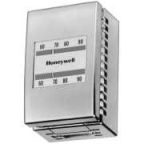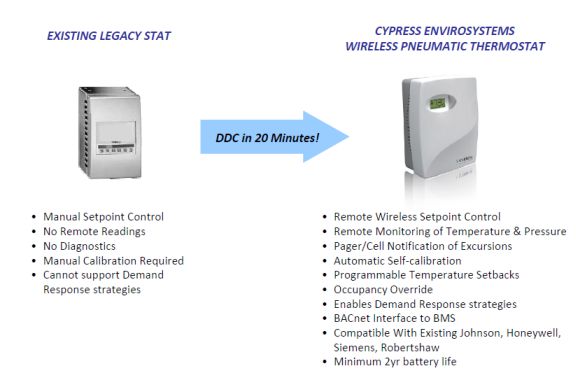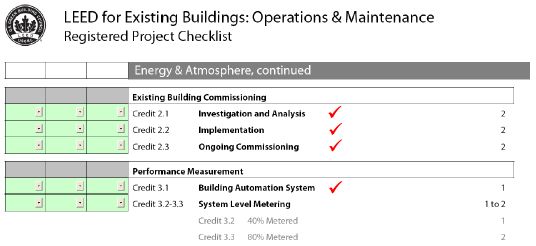Retrofit from Pneumatic to DDC
Commercial Buildings – Solutions
Overview
HVAC represents over 40% of the energy load of a typical office building. In buildings built today, a number of proven energy management strategies are deployed to significantly optimize energy, e.g. night setbacks, occupancy override, continuous commissioning. A significant number of LEED points are awarded for the energy savings delivered with these strategies. However, implementation requires a building to have modern Direct Digital Controls (DDC) to control the HVAC systems.
The Challenge
Unfortunately, the majority of office buildings in use today were built over 15 years ago, which means they do not have DDC. In fact, approximately 70% of buildings use pneumatic (compressed air) HVAC controls at the zone level that cannot be programmed or controlled remotely.
Retrofitting these buildings involves opening up walls and ceilings–potentially exposing harmful substances such as asbestos–to replace HVAC actuators and run wires. The initial cost is high (approximately $2,000-$3,000 per thermostat), the disruption to occupants often unacceptable, and the payback period is usually seven years or more. As a result, retrofits have not been very popular. In fact, over 60 billion sq-ft of commercial building space today still use legacy HVAC controls and cannot take advantage of modern energy management strategies.
Legacy Pneumatic Thermostat
 |
The Cypress Envirosystems Solution
The patent-pending Wireless Pneumatic Thermostat solution provides a cost-effective, easy-to-install retrofit solution for existing pneumatic HVAC thermostats. It can be installed in minutes without opening up walls or ceilings, and costs 80% less than a conventional DDC retrofit. It enables zone-level temperature setpoint policies, night and weekend setbacks, occupancy override, optimal start/stop, and automated continuous commissioning. As a result, the WPT delivers 10-25% savings in HVAC energy consumption, and qualifies for up to 7 LEED points associated with continuous commissioning and building automation.
 |
 |
Case Studies
The Wireless Pneumatic Thermostat pays back in less than 18 months in most cases. It also qualifies for utility incentives in many states, which will reduce the payback time even further.
Overview of County of Santa Clara Case Study
Detailed Santa Clara County Energy Savings Case Study Addendum (Jan 2010)


